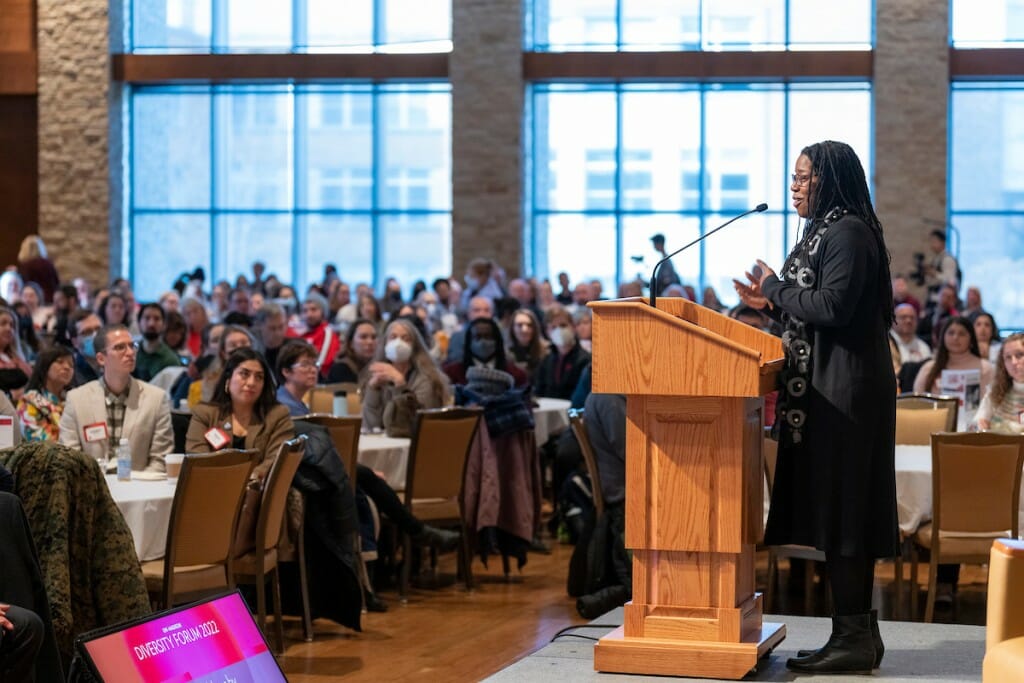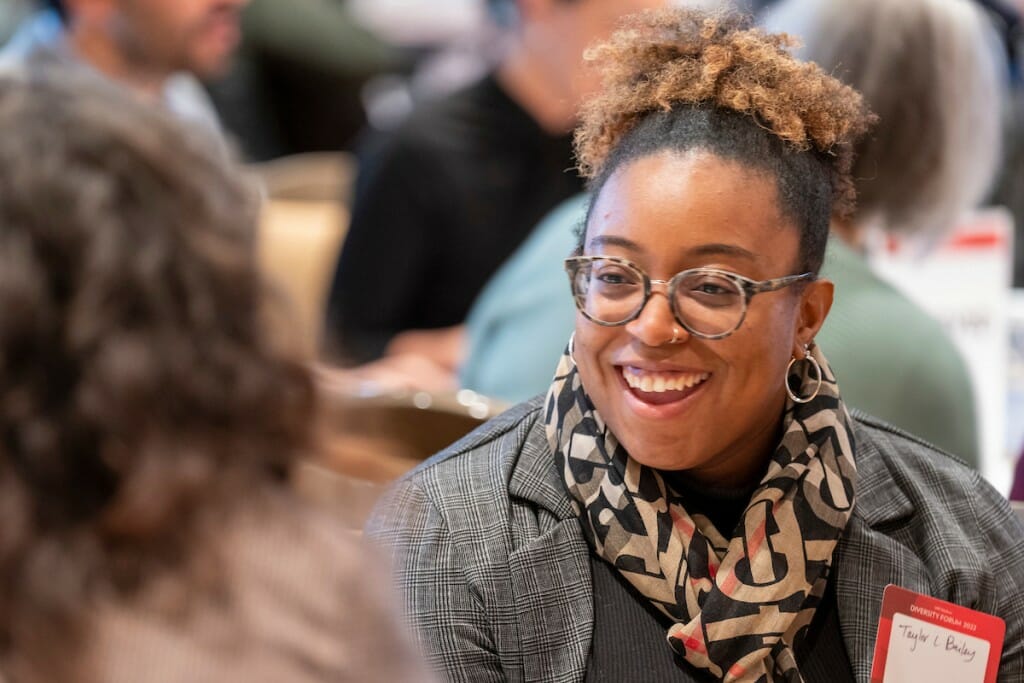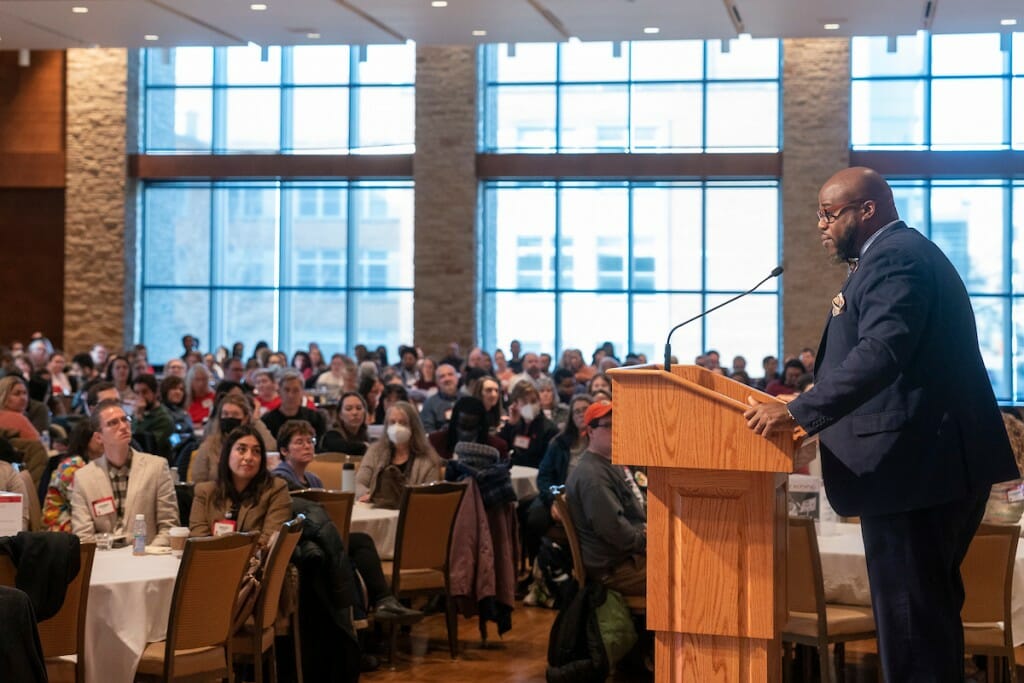Material objects tell stories – we just have to listen
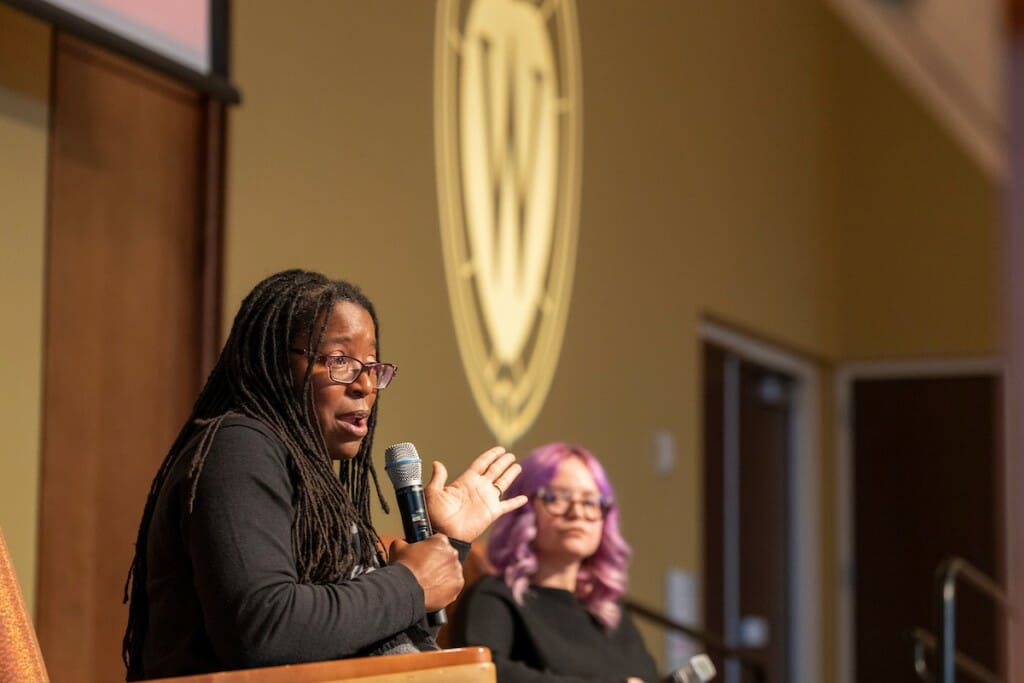
Tiya Miles was inspired to write her book after seeing a flour sack that had been passed down for generations in a famiiy. Writing the book widened her view of how we can tell history, she said. Photo by Andy Manis
The worn, discolored cotton flour sack had a story to tell, part of which was told with these stitched words:
“My great grandmother Rose/ mother of Ashley gave her this sack when/ she was sold at age 9 in South Carolina/ it held a tattered dress 3 handfulls of/ pecans a braid of Rose’s hair. Told her/ It be filled with my Love always/ she never saw her again/ Ashley is my grandmother/ Ruth Middleton/ 1921.”
Seeing it changed how Tiya Miles saw — and felt — history.
“I was completely taken over by a sense of sadness and loss, by a sense of sorrow and mourning. And also by a sense of exhilaration and joy,” Miles said.
It was the 1850s in South Carolina and an enslaved woman named Rose faced a crisis: the imminent sale of her daughter Ashley. Thinking quickly, she packed a cotton bag for her with a few items, and, soon after, the nine-year-old girl was separated from her mother and sold. Decades later, Ashley’s granddaughter Ruth embroidered this family history on the sack in spare, haunting language.
Even though Rose and Ashley were forced apart like so many enslaved people, Miles said, the sack that has survived since the 1850s shows that they were remembered and cherished.
“The love that Rose the mother packed into the sack prevailed,” Miles said.
Miles, a Harvard historian and professor, shared the story Monday at the 2022 Diversity Forum during her keynote, “Carrying It Forward: Material Culture, Living Memory, and Historical Engagement.”
She was inspired to write “All That She Carried: The Journey of Ashley’s Sack, a Black Family Keepsake,” a poignant story of resilience and of love passed down through generations of women against steep odds. The book won the 2021 National Book Award for Nonfiction and the PEN/John Kenneth Galbraith Award for Nonfiction and was also named one of the best books of 2021 by The Washington Post, New York Times, Slate, Vulture, NPR, The Atlantic and numerous other publications.
Before all of the accolades, all Miles knew was she had a story to tell. But she wasn’t sure how to tell it. She considered herself a document, textual and narrative-based scholar.
“Historians typically turn to plantation journals, elite family papers and business transactions, diaries of plantation mistresses, newspaper advertisements and probate records, to reconstruct this troubling past,” Miles said. “But the available documents often produced by enslavers only reveal the shadowy outlines of enslaved people’s actual lives.”
Artifacts were the domain of archaeologists. Or so she thought.
“I learned because I had to. I wanted to understand,” Miles said. “I learned because it was important. I needed to try to understand the meaning and history of this beautiful, compelling object.”
Seeing that flour sack and writing the book widened her view of how we can tell history.
“I think these kinds of objects can be really important tools that can tell us about Black women and enslavement,” Miles said. “Things can help us feel connected to the past and also the present.”
It may seem hard to believe, but Miles did not enjoy history class when she was in high school.
“This is kind of a secret,” she laughed as she told the audience.
History felt cold. Distant. The people they were learning about didn’t seem to have anything to do with her.
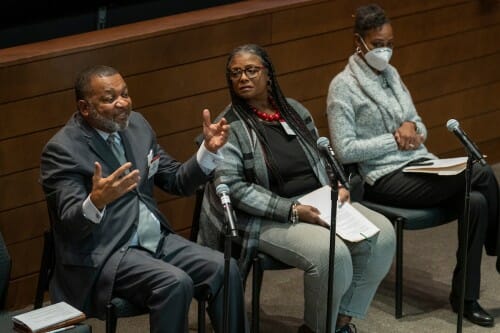
From left to right, Rev. Anthony “Bishop” Wade of the Second Baptist Church in Madison; Carola Peterson-Gaines, community research associate for the Community-Academic Aging Research Network; and Earlise Ward, UW Family Medicine and Community Health professor, participate in a panel titled “Nothing for Us Without Us: Experiences with Community-Academic Partnerships” at the 2022 Diversity Forum. Photo by Andy Manis
“It took me a very long time to realize the stories my grandmother told me on the porch about her family growing up in Mississippi and coming up on the Great Migration — that was actually history too,” Miles said. “Once I realized that, I was all in.”
She felt the meaning and the importance of knowing the stories of people usually left out of history books.
“It really is everyday people who make up the vast majority of actions in the past,” she said. “Everyday people matter. But they’re also sidelined because they just don’t have these troves of papers that are going to be put in a certain kind of library and cared for.”
By combining material objects with documentary records and oral history accounts, we can enrich our access to enslaved people’s lives and times and feel more meaningfully connected, Miles said.
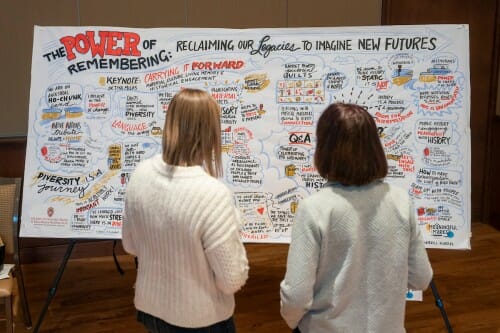
Attendees look at a poster at the Diversity Forum. Photo by Andy Manis
“I think that recognizing the beauty and the value in the everyday and in the seemingly mundane aspects of life is really about getting to the meaning of life itself,” Miles said. “It’s really important for our students to develop that skill in seeing the beauty and the power and the importance in the everyday.”
Material objects, like an old sack, are carried through history even when formal documents aren’t. In her book, Miles turns to objects, art, and the environment to write a singular history of the experience of slavery. For Miles, it’s a way to honor the creativity and resourcefulness of people who preserved family ties when official systems refused to do so. It serves as a visionary illustration of how to reconstruct and recount their stories today.
“We can’t afford to turn away if we intend to come closer to their experiences and to really see them and respect them,” Miles said. “Keeping objects in view, and when possible in hand, enables us to envision the past differently and more deeply affords us glimpses of emotion, creativity, spirituality and resilience.”
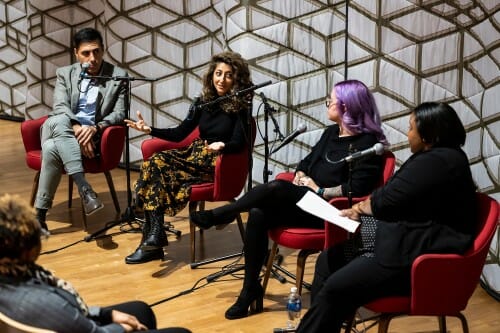
From left to right, Ramtin Arablouei and Rund Abdelfatah, co-hosts and co-producers of NPR’s podcast “Throughline,” and Kacie Lucchini Butcher, director of UW–Madison’s Public History Project, engage in a public panel discussion moderated by Christy Clark-Pujara (at far left), a professor of history in UW–Madison’s Department of Afro-American Studies. Photo: Jeff Miller
Also on Monday, Journalists in Residence Rund Abdelfatah and Ramtin Arablouei, co-hosts and producers of NPR’s Peabody Award-winning podcast “Throughline,” served on a public panel discussion as part of the Diversity Forum.
The 2022 Diversity Forum, The Power of Remembering: Reclaiming Our Legacies to Imagine New Futures, wrapped up Tuesday. For more information, visit here. Watch Miles’ keynote speech.
Read or listen to an excerpt from “All That She Carried: The Journey of Ashley’s Sack, a Black Family Keepsake.”

